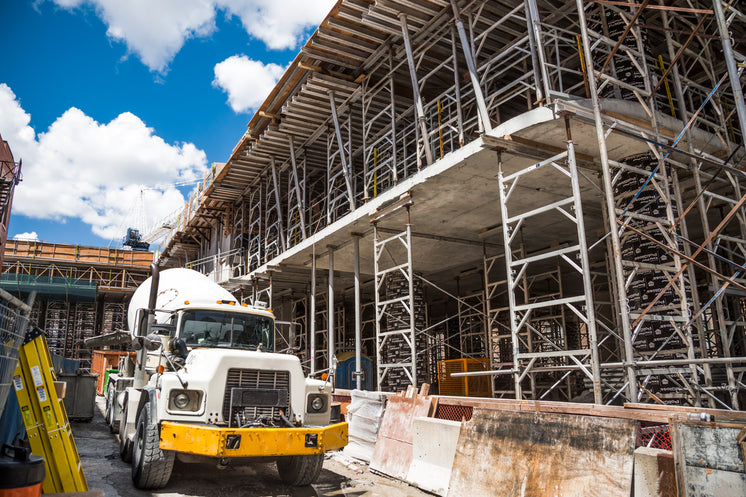The construction and maintenance industries, cornerstones of global infrastructure and economic growth, are currently navigating a complex landscape. Marked by rapid technological advancements, evolving environmental regulations, and persistent labor shortages, these sectors are undergoing a period of significant transformation. From towering skyscrapers to intricate road networks, the built environment is constantly evolving, demanding innovative solutions and a proactive approach to maintenance to ensure longevity and sustainability.
Technological Advancements Reshaping the Industry
Technology is playing a pivotal role in reshaping both construction and maintenance practices. The adoption of Building Information Modeling (BIM) is revolutionizing the design and planning phases. BIM allows architects, engineers, and contractors to create detailed 3D models of buildings and infrastructure projects, facilitating better collaboration, clash detection, and cost estimation. This collaborative approach minimizes errors, reduces rework, and ultimately streamlines the construction process.
Drones are becoming increasingly prevalent in construction and maintenance. Equipped with high-resolution cameras and sensors, drones can be used for site surveying, progress monitoring, and inspections. They provide real-time data, enabling project managers to track progress, identify potential issues early on, and make informed decisions. In maintenance, drones are particularly useful for inspecting hard-to-reach areas, such as rooftops, bridges, and pipelines, reducing the need for manual inspections and improving worker safety.
The rise of artificial intelligence (AI) and machine learning (ML) is also making its mark. AI-powered tools are being used for tasks such as predictive maintenance, which analyzes data from sensors and equipment to predict potential failures and schedule maintenance proactively. This minimizes downtime, reduces repair costs, and extends the lifespan of assets. AI is also being used for optimizing resource allocation, improving project scheduling, and enhancing safety protocols.
Robotics is another area of significant growth. Robots are being deployed for tasks such as bricklaying, welding, and concrete pouring, automating repetitive and dangerous tasks, improving efficiency, and reducing labor costs. While the adoption of robotics is still in its early stages, it is expected to become increasingly widespread in the coming years.
Sustainability and Environmental Considerations
Sustainability is no longer a niche concern; it is a fundamental requirement in the construction and maintenance industries. Growing awareness of climate change and the need to reduce carbon emissions is driving the adoption of green building practices and sustainable materials.
Green building certifications, such as LEED (Leadership in Energy and Environmental Design), are becoming increasingly popular. These certifications recognize buildings that meet specific environmental standards, including energy efficiency, water conservation, and the use of sustainable materials.
The use of sustainable materials is also gaining momentum. This includes the use of recycled materials, such as reclaimed concrete and steel, as well as the development of innovative materials with lower environmental impacts, such as bio-based concrete and timber.
Energy efficiency is a key focus in both new construction and maintenance projects. This includes the use of energy-efficient lighting, HVAC systems, and building envelopes. Retrofitting existing buildings with energy-efficient technologies is also a significant area of focus, as it can significantly reduce energy consumption and carbon emissions.
The circular economy is another important concept in sustainable construction and maintenance. This involves designing buildings and infrastructure with the end-of-life in mind, making it easier to reuse and recycle materials. This reduces waste, conserves resources, and minimizes environmental impact.
Labor Shortages and the Skills Gap
The construction and maintenance industries are facing a persistent labor shortage, exacerbated by an aging workforce and a lack of skilled workers entering the trades. This shortage is impacting project timelines, increasing costs, and hindering innovation.
Addressing the labor shortage requires a multi-pronged approach. This includes attracting younger generations to the trades, providing training and apprenticeship programs, and promoting diversity and inclusion within the workforce.
Investing in training and education is crucial to equip workers with the skills needed to succeed in the evolving industry. This includes training in new technologies, such as BIM, drone operation, and robotics. Apprenticeship programs provide hands-on experience and on-the-job training, helping to develop a skilled workforce.
Promoting diversity and inclusion is also essential. The construction and maintenance industries have historically been male-dominated, and efforts are needed to attract and retain women and underrepresented groups. This includes creating a more inclusive work environment, providing mentorship opportunities, and addressing any barriers to entry.
Maintenance: The Unsung Hero of Infrastructure
While new construction often grabs the headlines, the maintenance of existing infrastructure is equally critical. Regular maintenance is essential to ensure the safety, functionality, and longevity of buildings, roads, bridges, and other assets.
Proactive maintenance, which involves regular inspections, preventative maintenance, and timely repairs, is more cost-effective than reactive maintenance, which involves responding to failures and emergencies. Proactive maintenance extends the lifespan of assets, reduces downtime, and minimizes the risk of costly repairs.
The use of technology is also transforming maintenance practices. Smart sensors and data analytics are being used to monitor the condition of assets, predict potential failures, and schedule maintenance proactively. This allows maintenance teams to prioritize their efforts and optimize resource allocation.
The maintenance industry is also facing its own set of challenges, including an aging workforce and a lack of skilled workers. If you beloved this posting and you would like to acquire far more details relating to services offered by hometown handyman renovations and construction edmonton [how you can help] kindly check out our website. Addressing these challenges requires investing in training and education, promoting the value of maintenance careers, and embracing new technologies.
The Future of Construction and Maintenance
The construction and maintenance industries are poised for continued transformation. Technological advancements, sustainability concerns, and labor market dynamics will continue to shape the future of these sectors.
The integration of AI, robotics, and other advanced technologies will become increasingly widespread, automating tasks, improving efficiency, and enhancing safety. Sustainable building practices and the use of sustainable materials will become the norm, driven by environmental regulations and consumer demand.

The labor shortage will continue to be a challenge, but efforts to attract and train skilled workers, promote diversity and inclusion, and embrace new technologies will help to mitigate its impact.
The construction and maintenance industries play a vital role in shaping the built environment and supporting economic growth. By embracing innovation, prioritizing sustainability, and investing in the workforce, these sectors can overcome the challenges they face and build a more resilient and sustainable future. The ability to adapt and evolve will be key to success in this dynamic and ever-changing landscape.
